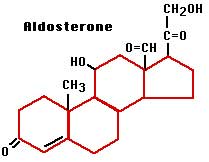Recognize diabetes insipidus
Diabetes mellitus should be considered if urination is too much, about 4-8 liters / day; pale urine, no sugar. Drinking less water only makes patients uncomfortable, not reducing urination.
 ADH hormone has a diuretic effect, produced from the hypothalamus, stored in the posterior pituitary and excreted into the body. When the ADH concentration in the blood decreases, the ability to resist diuresis decreases or loses, the patient will urinate more, drink more and experience systemic disorders due to large amounts of urine being excreted. It is diabetes insipidus. The disease can occur at any age, more often in teenagers and men than in women.
ADH hormone has a diuretic effect, produced from the hypothalamus, stored in the posterior pituitary and excreted into the body. When the ADH concentration in the blood decreases, the ability to resist diuresis decreases or loses, the patient will urinate more, drink more and experience systemic disorders due to large amounts of urine being excreted. It is diabetes insipidus. The disease can occur at any age, more often in teenagers and men than in women.
Diabetes insipidus can be primary due to disruption of ADH or secondary processes due to damage to the pituitary hypothalamus. Secondary cases are usually caused by tumors, accounting for 30-50% of cases. All pituitary polyps or metastatic tumors from other places can cause diabetes insipidus. There are also cases of diabetes insipidus in people with abnormalities or abnormal development of the hypothalamus. At this time, patients are accompanied by symptoms of neurodevelopment and genital growth, fat, retinitis pigmentosa .
Infection due to chronic inflammation or sequelae of meningitis, encephalitis, cranial trauma or surgery near the pituitary and hypothalamus can also cause diabetes insipidus. Unusual or abnormal development of hypothalamus is common in children, accompanied by other disorders such as mental and genital retardation, fat, retinitis pigmentosa and multi-finger sticking.
Primary diabetes insipidus is hereditary, often occurring early, may be family or dispersal; It is also sometimes related to gender. Untreated diabetes insipidus accounts for 30% of cases.
Mechanism of pathogenesis: Normally, the renal tubule has the function of reabsorption of water, causing the urine to be concentrated before being excreted. When ADH is deficient, the reabsorption of water in the renal tubules is not normal, so the kidney does not concentrate urine. The body exits a large amount of water out of the way so that patients need to urinate a lot, causing dehydration in the body and cells, making the patient feel thirsty, having to drink plenty of water to compensate for lost water.
Typical disease with the following symptoms (may appear slowly or suddenly immediately after infection, injury): Urination 4-8 liters / day, there are severe cases can be up to 40 liters / day ; For young children, 1-2 liters / day. Urine is pale, no sugar, no protein, very low density. Drinking less water only makes patients uncomfortable, does not reduce urination, the proportion of urine does not increase. Drinking a lot: due to urination, many patients are very thirsty, so they drink a lot.
Children often cry for water, when drinking enough water, keep it quiet. The amount of water injected is nearly equal to the amount of urine output. Systemic symptoms: At first, there is usually little change, except in young children can see signs of chronic dehydration, digestive disorders, vomiting, diarrhea, constipation. People with dry, green skin and little sweating, children do not see weight gain, malnutrition, high fever without cause . If not provided with adequate water, the patient may be dehydrated, heart failure .
When there are suspicious signs as above, patients need to go immediately to medical facilities, especially hospitals with endocrinology to be tested, definite diagnosis, diagnosis of causes and conditions. appropriate treatment.
- What is diabetes? Causes and ways to treat diabetes
- Vaccines for type 1 diabetes will be tested on humans in 2018
- Diabetic identification signs: Much thirst ...
- 5 dishes from diabetes room beans
- Classify 5 diabetes groups for treatment of target
- Diabetes, things you can't ignore
- After you see these signs appear, the risk of diabetes is very high
- People with diabetes should not absolutely abstain from eating sweet
- Vietnam is going to have a diabetes meter without blood injection?
- History of nearly 100 of insulin - the source of life for people with diabetes
- Cure diabetes according to traditional medicine
- The truth of the disease kills more people than traffic accidents in Vietnam
 Green tea cleans teeth better than mouthwash?
Green tea cleans teeth better than mouthwash? Death kiss: This is why you should not let anyone kiss your baby's lips
Death kiss: This is why you should not let anyone kiss your baby's lips What is salmonellosis?
What is salmonellosis? Caution should be exercised when using aloe vera through eating and drinking
Caution should be exercised when using aloe vera through eating and drinking